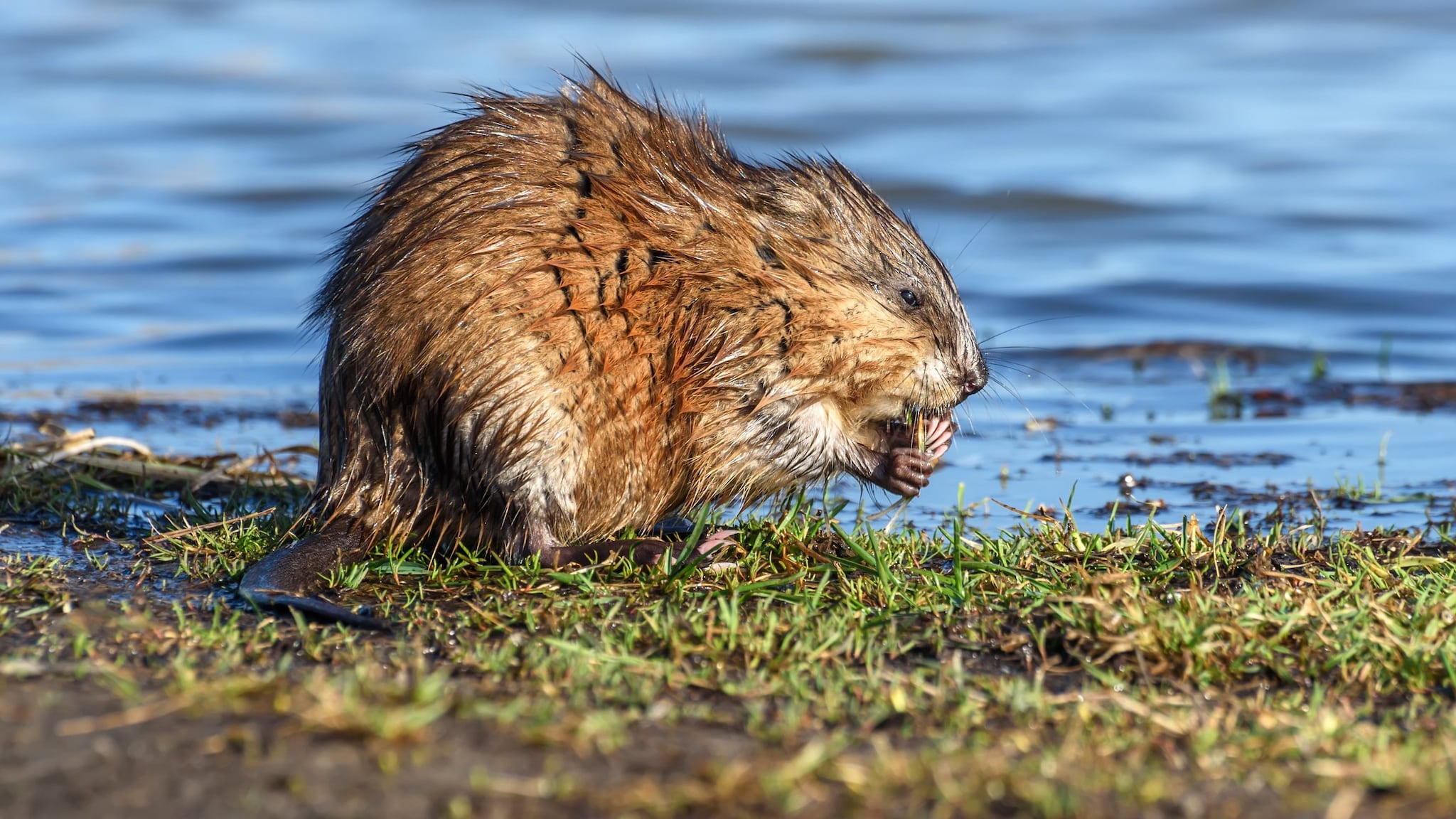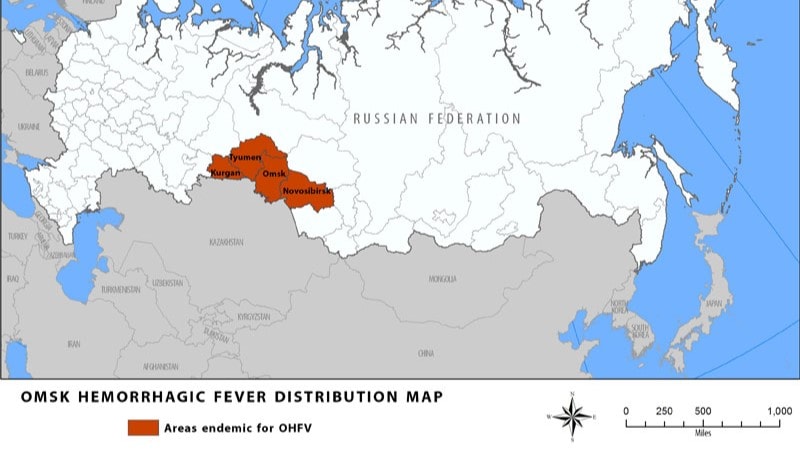Key points
- Omsk hemorrhagic fever (OHF) is a rare disease caused by a virus spread by an infected tick or rodent.
- OHF only occurs in certain areas of Siberia, Russia.
- There is currently no treatment or vaccine for OHF.
- Most people with OHF fully recover after 1 or 2 weeks.

What it is
Omsk hemorrhagic fever (OHF) is caused by Omsk hemorrhagic fever virus (OHFV). OHF was identified between 1945 and 1947 in Omsk, Russia.
OHF occurs in Russia--specifically, in the western Siberia regions of Omsk, Novosibirsk, Kurgan, and Tyumen.
While there is not treatment for OHF, most people recover after 1 or 2 weeks. About 5 to 30 people out of 1,000 with OHF die of the disease. OHF is rare and is unlikely to pose a public health threat to people living in the United States.

Signs and symptoms
People with OHF may experience chills, fever, headache, severe body aches, and vomiting. After 3 or 4 days, symptoms can include diarrhea and unexplained bleeding from the nose, eyes, or rectum.
After being sick for 1 or 2 weeks, most people with OHF fully recover. However, some people may experience a second wave of symptoms, including fever and swelling of the brain, in the third week.
Rarely, OHF can cause hearing loss, hair loss, and behavior or psychological conditions. Long-term supportive care may be needed for people with symptoms that impair their motor skills.
Risk factors
People in rural or outdoor settings in western Siberia have a higher risk for OHF. These people are more likely to encounter infected ticks and rodents. This includes hunters, campers, forest workers, farmers, and muskrat trappers. People are more likely to be infected during the winter months.
Laboratory workers handling OHF specimens without proper personal protective equipment are also at risk.
How it spreads
People get OHF through tick bites or contact with the blood, feces, or urine of an infected animal, usually a rodent. Ticks that can spread OHF include Dermacentor reticulatus, Dermacentor marginatus, and Ixodes persulcatus. Rodents that can spread OHF include the muskrat, water vole, and narrow-skulled vole.
People cannot spread OHF to each other.
Though unusual, it is possible to get OHF without direct contact with ticks or rodents. The virus that causes OHF has been found in aquatic animals and water. The virus in the water could enter the body through broken skin or the eyes and nose. This would be extremely rare. There is even evidence that OHF can be spread by drinking the milk of goats or sheep infected with OHF.
Reducing risk
If you plan to spend time in rural or outdoor areas in western Siberia,
- Prevent tick bites.
- Avoid contact with muskrats, voles, and sick or dead animals.
There is no vaccine currently available for OHF. However, vaccines for another disease spread by ticks (tick-borne encephalitis) may offer some protection. These can be considered for high-risk groups, like muskrat hunters. Talk to your healthcare provider if you are traveling to the area and may have contact with animals.
- Charrel RN, Attoui H, Butenko AM, et al. Tick-borne virus diseases of human interest in Europe. Clinical Microbiology and Infection. 2004; 10(12):1040-1055.
- Gould EA and Solomon T. Pathogenic flaviviruses. Lancet. 2008; 371(9611):500-509.
- Gritsun TS, Lashkevich VA, Gould EA. Tick-borne encephalitis. Antiviral Research. 2003; 57(1-2):129-146.
- Kharitonova, N. N. and Leonov, Yu. A. Omsk Hemorrhagic Fever – Ecology of the agent and epizootiology. New Delhi: Amerind Publishing Co Pvt. Ltd; 1985.
- Orlinger KK, Hofmeister Y, Fritz R, et al. A Tick-borne Encephalitis Virus Vaccine Based on the European Prototype Strain Induces Broadly Reactive Cross-neutralizing Antibodies in Humans. Journal of Infectious Diseases. 2011; 203(11):1556-1564.
- Rùžek D, Yakimenko VV, Karan LS, and Tkachev SE. Omsk haemorrhagic fever. Lancet. 2010; 376(9758):2104-2113.
